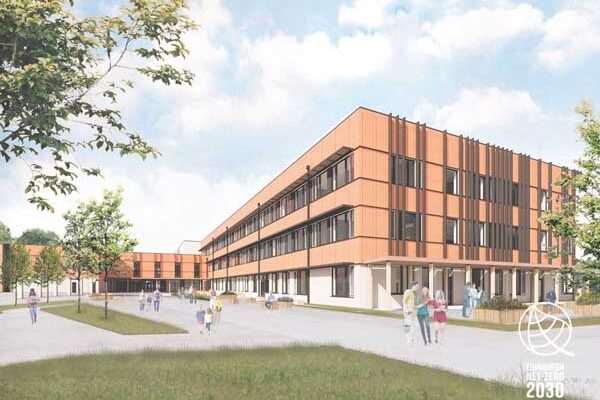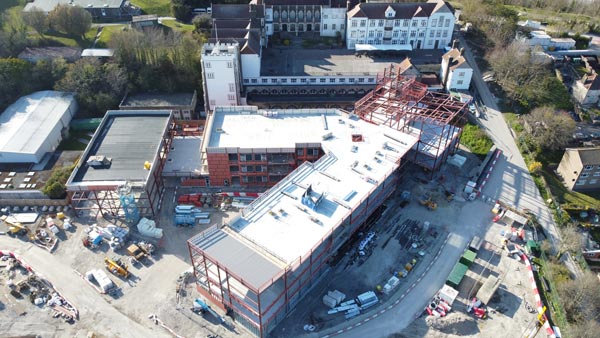News
Study proves steel is sustainable choice
An audit of the CO2 emissions produced in the construction of an Oxford University departmental building comparing steel and concrete options shows that the superstructure of a steel building would generate 22% less CO2 emissions than the concrete alternative.
Authors of the study say that there is such significant environmental benefit to be gained from auditing structural options that any appraisal of options or design changes should place as much emphasis on C02 emissions as on cost or programme implications.
The study, by consulting engineers Peter Brett Associates (PBA), showed that using a steel composite solution meant a reduction in overall CO2 emissions of 361 tonnes. PBA was commissioned to design a new educational building near the city centre, consisting of four above ground storeys and two basement levels. The total footprint was some 12,000m² on a congested site with poor transport access. Adjacent buildings were in constant use and the number and size of deliveries to site would be a key design consideration.
PBA’s Dr Fergal Kelly said: “The client, has a rigorous and knowledgeable approach to sustainability, which encouraged the design team to set high standards in this area. To ensure the most sustainable structure for the building we decided to investigate the various structural options in terms of C02 emissions and embodied energy. This project has demonstrated that in terms of the materials and the haulage involved in construction, steel is highly competitive in sustainability terms. This is despite the heavy steel structure in the basement to resist retaining wall forces.”
The study included emissions related to materials, haulage of materials and excavation arisings, a comparison with a concrete option and updated changes to the structure. “So it was an audit on a live project as we took account of design changes during the construction process,” said Dr Kelly.
The steel option was chosen for the project on the grounds that the overall structural cost was favourable, the programme faster and construction traffic to and from site was reduced. “However, it was an additional benefit that these aspirations were achieved in conjunction with improving sustainability credentials, Dr Kelly concluded.











